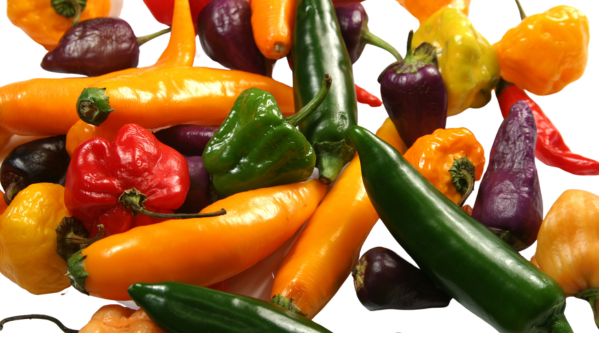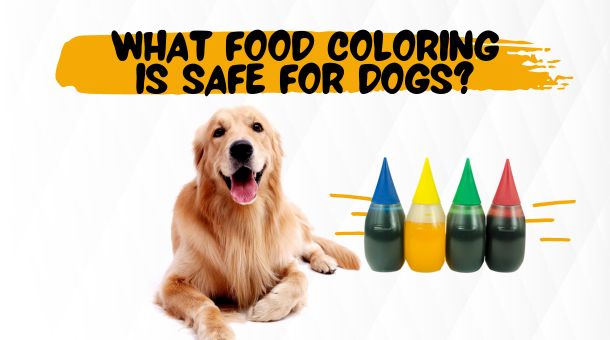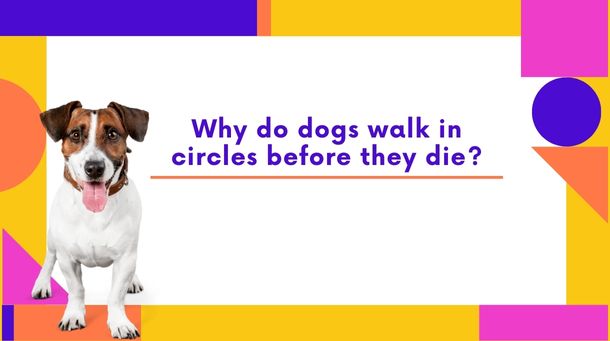If you enjoy baking homemade dog treats, you may have wondered if food coloring is safe for your recipes. While some food coloring options can be safe for dogs, others may be harmful and potentially toxic.
Knowing the difference and choosing the right food coloring for your furry friend’s treats is important. In this article, we’ll discuss the various types of food coloring and their safety for dogs and provide tips for safely using food coloring in homemade dog treats.
We’ll also explore natural food coloring options, the risks of using artificial food coloring for dogs, and how to spot signs of toxicity and allergic reactions.
Whether you’re a seasoned dog treat baker or just starting, this guide will help you make informed decisions about using food coloring in your recipes.
How to Safely Use Food Coloring in Dog Treats

When using food coloring in dog treats, it’s important to do so safely to avoid potential health risks. Here are some tips for using food coloring in your dog treats:
- Begin with just a small amount of food coloring and gradually increase until you reach the desired color.
- Stick to natural food coloring options such as beet juice, carob powder, turmeric, blueberries, paprika, and spinach.
- Some artificial food colorings can harm dogs, so it’s best to avoid them altogether.
- Read the labels of any food coloring products you use to ensure they are safe for dogs and do not contain harmful ingredients.
- Mix the food coloring thoroughly into the dough or batter to ensure even distribution.
- While some can add a nice touch to your dog treats, too much can be harmful. Stick to small amounts to achieve the desired color.
- Keep an eye on your dog after feeding them treats with food coloring to watch for any signs of digestive upset or allergic reactions.
Following these tips, you can safely add a pop of color to your homemade dog treats. Remember, your dog’s health and safety should always come first when making homemade treats.
Natural Food Coloring Options for Dogs:

Natural food coloring options are a safe and healthy way to add color to your dog’s treats. Here are some natural food coloring options that you can use:
Beet Juice:
This is a popular natural food coloring option for dogs. It provides a vibrant red or pink hue to treats and is derived from beets.
Carob Powder:
Made from carob tree pods, carob powder provides a brown color to treats and is a great alternative to chocolate, which is toxic to dogs.
Turmeric:
Turmeric is a natural spice that provides a bright yellow color to treats. It also has anti-inflammatory properties that can benefit your dog’s health.
Blueberries:
Blueberries can add a blue or purple tint to treats. They are also a healthy addition to your dog’s diet due to their antioxidant content.
Paprika:
Paprika is made from dried ground peppers and provides a reddish-brown color to treats. It is safe in small quantities.
Spinach:
Spinach is a leafy green vegetable that can add a green hue to treats. It is also a great source of vitamins and minerals for dogs.
Turmeric & beet juice:
Turmeric can be mixed with beet juice to create a vibrant orange color for your dog’s treats.
When using natural food coloring options, it’s important to start with small amounts and monitor your dog for any signs of adverse reactions. Always check with your vet if you have concerns about using a particular ingredient in your dog’s treats.
Is Food Coloring Harmful to Dogs?
The answer to this question depends on the type of food coloring used. While some food coloring options are safe for dogs, others can be harmful and potentially toxic. Artificial food colorings such as FD&C Blue No. 2, FD&C Yellow No. 5, and FD&C Red No. 40 have been linked to dog health issues, including allergic reactions, digestive upset, and cancer. These artificial food colorings should be avoided when making treats for your dog.
On the other hand, natural food coloring options such as beet juice, carob powder, turmeric, blueberries, paprika, and spinach are generally safe for dogs to consume. However, monitoring your dog for any signs of adverse reactions is important, as some dogs may have allergies or sensitivities to certain ingredients.
It’s always best to consult your veterinarian before introducing new foods or ingredients to your dog’s diet, including food coloring. Doing so can ensure you make informed decisions about your dog’s health and well-being.
The Risks of Artificial Food Coloring for Dogs

Artificial food coloring is made from synthetic chemicals designed to enhance food’s appearance. While these food colorings are commonly used in human foods, they can harm dogs when ingested.
Here are some of the risks associated with artificial food coloring for dogs:
Allergic Reactions:
Artificial food coloring can cause allergic reactions in dogs like humans. Some dogs may be more sensitive to certain food colorings and can experience itching, hives, and swelling symptoms.
Digestive Upset:
Ingesting large amounts of artificial food coloring can cause digestive upset in dogs, including vomiting, diarrhea, and loss of appetite.
Hyperactivity:
Some studies suggest that certain artificial food colorings can cause hyperactivity in children, and there is a possibility that the same effect can occur in dogs.
Cancer:
Some artificial food colorings have been linked to human cancer, and there is a concern that they could have the same effect on dogs. While the evidence is not conclusive, it’s best to err on the side of caution and avoid these ingredients in your dog’s treats.
To ensure your dog’s safety, it’s best to stick to natural food coloring options when making treats. If you suspect your dog has ingested artificial food coloring and is experiencing any symptoms, contact your veterinarian immediately.
Can Food Coloring Cause Allergic Reactions in Dogs?

Yes, food coloring can cause allergic reactions in dogs. Some dogs can be allergic or sensitive to certain food colorings like humans. Common symptoms of an allergic reaction in dogs include itching, redness, swelling, hives, vomiting, and diarrhea.
Artificial food colorings are more likely to cause allergic reactions in dogs than natural ones. This is because artificial food colorings are made from synthetic chemicals not found in nature and may be more difficult for some dogs to digest. Some of the most common artificial food colorings that cause allergic reactions in dogs include FD&C Blue No. 2, FD&C Yellow No. 5, and FD&C Red No. 40.
If you suspect your dog is allergic to food coloring, it’s important to contact your veterinarian immediately. They can help identify the cause of the reaction and recommend the appropriate treatment.
To prevent allergic reactions in your dog, consider using natural food coloring options when making treats and avoid any ingredients your dog has reacted to in the past.
Homemade Dog Treat Recipes Using Safe Food Coloring
Here is a few homemade dogs treat recipes using safe and natural food coloring options:
Beet and Carrot Dog Treats Ingredients:
- 2 cups whole wheat flour
- 1/2 cup shredded carrots
- 1/2 cup beet juice
- 1/2 cup water
Instructions:
Preheat oven to 350°F (180°C).
- Combine flour, carrots, beet juice, and water in a large mixing bowl. Mix until a dough forms.
- On a lightly floured surface, roll the dough out to about 1/4 inch thickness.
- Use cookie cutters to cut out the dough into desired shapes.
- Place the treats on a baking sheet and bake for 25-30 minutes or until lightly browned.
- Allow the treats to cool completely before serving them to your dog.
- Turmeric and Peanut Butter Dog Treats Ingredients:
- 2 cups whole wheat flour
- 1/2 cup natural peanut butter
- 1/4 cup turmeric
- 1/2 cup water
Instructions:
Preheat oven to 350°F (180°C).
- Combine flour, peanut butter, turmeric, and water in a large mixing bowl. Mix until a dough forms.
- On a lightly floured surface, roll the dough out to about 1/4 inch thickness.
- Use cookie cutters to cut out the dough into desired shapes.
- Place the treats on a baking sheet and bake for 25-30 minutes or until lightly browned.
- Allow the treats to cool completely before serving them to your dog.
- Blueberry and Spinach Dog Treats Ingredients:
- 2 cups whole wheat flour
- 1/2 cup fresh blueberries
- 1/2 cup fresh spinach
- 1/2 cup water
Instructions:
Preheat oven to 350°F (180°C).
- In a blender, blend blueberries, spinach, and water until smooth.
- In a large mixing bowl, combine flour and the blueberry-spinach mixture. Mix until a dough forms.
- On a lightly floured surface, roll the dough out to about 1/4-inch thickness.
- Use cookie cutters to cut out the dough into desired shapes.
- Place the treats on a baking sheet and bake for 25-30 minutes or until lightly browned.
- Allow the treats to cool completely before serving them to your dog.
- Always monitor your dog’s reactions when introducing new foods or treats to their diet, and consult with your veterinarian if you have any concerns.
How to Spot Signs of Food Coloring Toxicity in Dogs?
Food coloring toxicity in dogs can occur if they consume too much artificial food coloring or are allergic to a specific food coloring. Here are some signs of food coloring toxicity in dogs to watch for:
- Vomiting and Diarrhea
- Change in Urine Color
- Lethargy
- Loss of Appetite
- Behavioral Changes
conclusion
Food coloring can be a fun and creative way to make your dog’s treats more visually appealing, but it’s important to be aware of the potential risks associated with artificial food coloring. While some dogs may not experience any negative effects, others may develop allergies or experience toxicity if they consume too much.
When using food coloring, it’s crucial to stick to safe and natural options and monitor your dog’s reactions closely. Additionally, if you suspect your dog has ingested a toxic amount of food coloring, seek veterinary care immediately. By taking these precautions, you can ensure that your furry friend remains healthy and happy.
What food coloring is safe for dogs? What food coloring is safe for dogs? What food coloring is safe for dogs? What food coloring is safe for dogs? What food coloring is safe for dogs? What food coloring is safe for dogs? What food coloring is safe for dogs?




